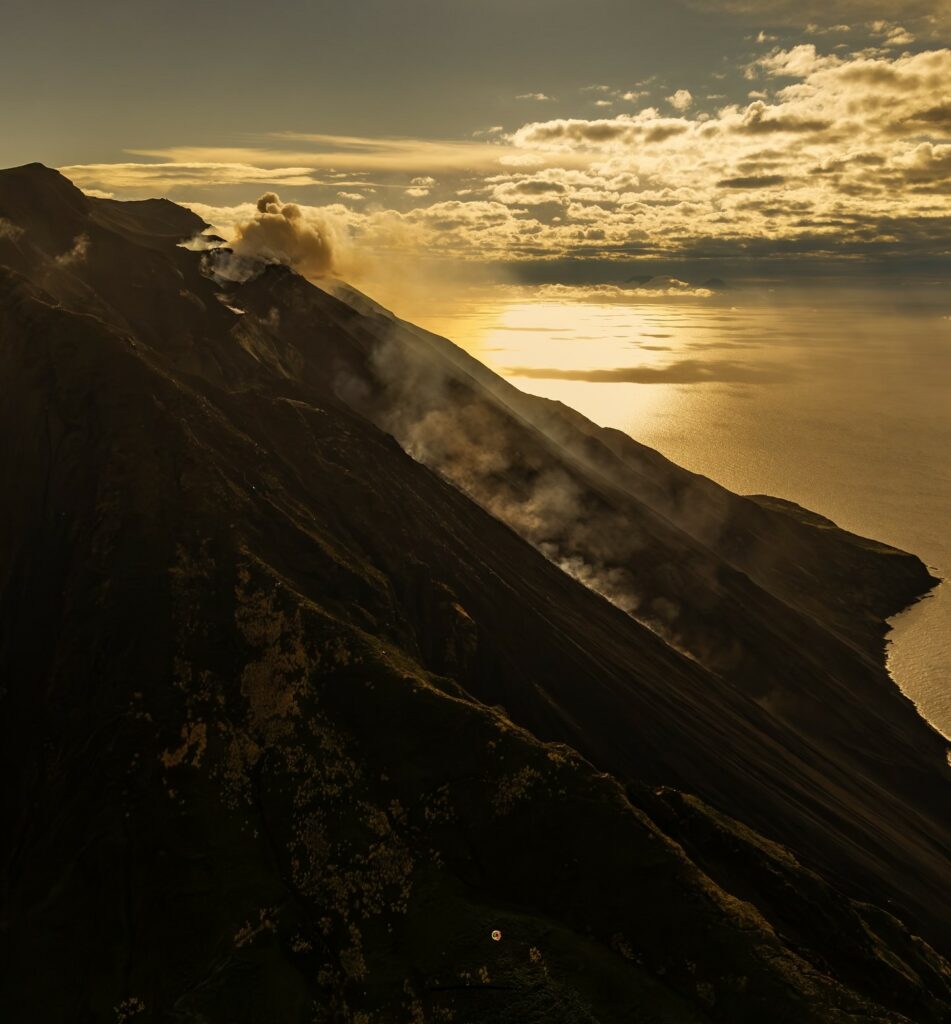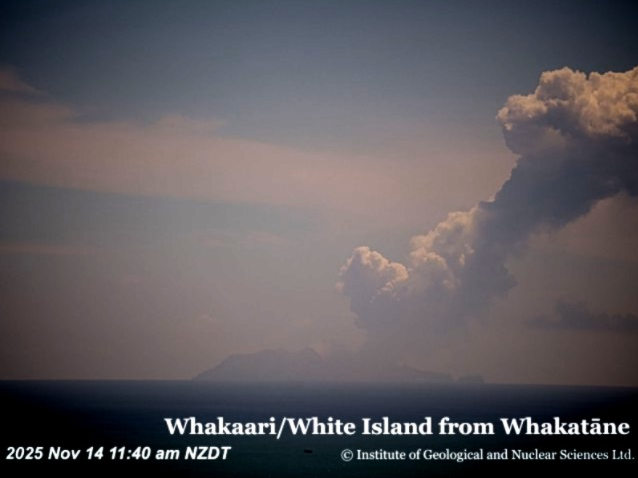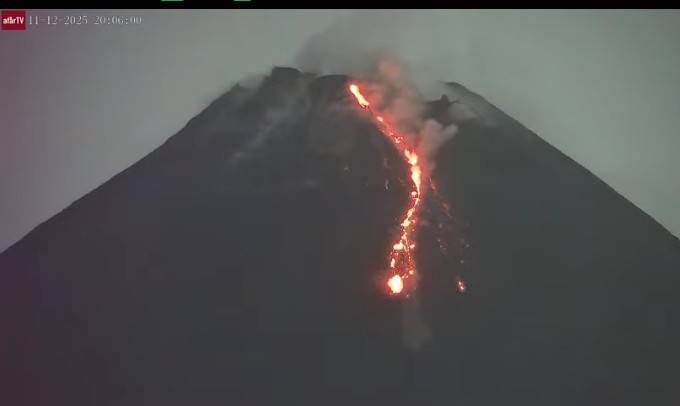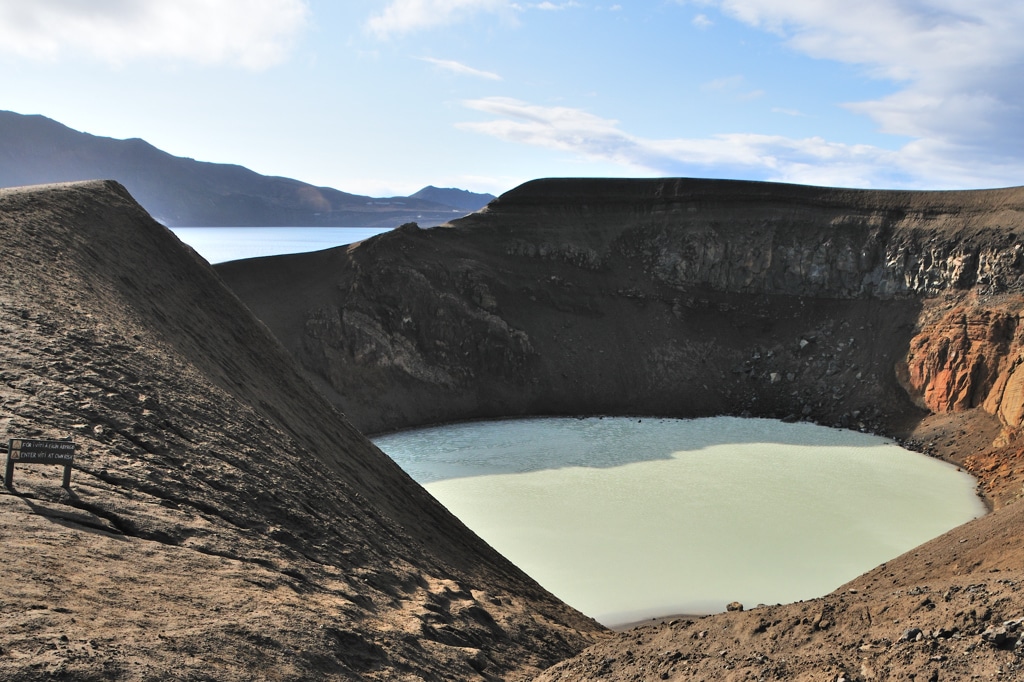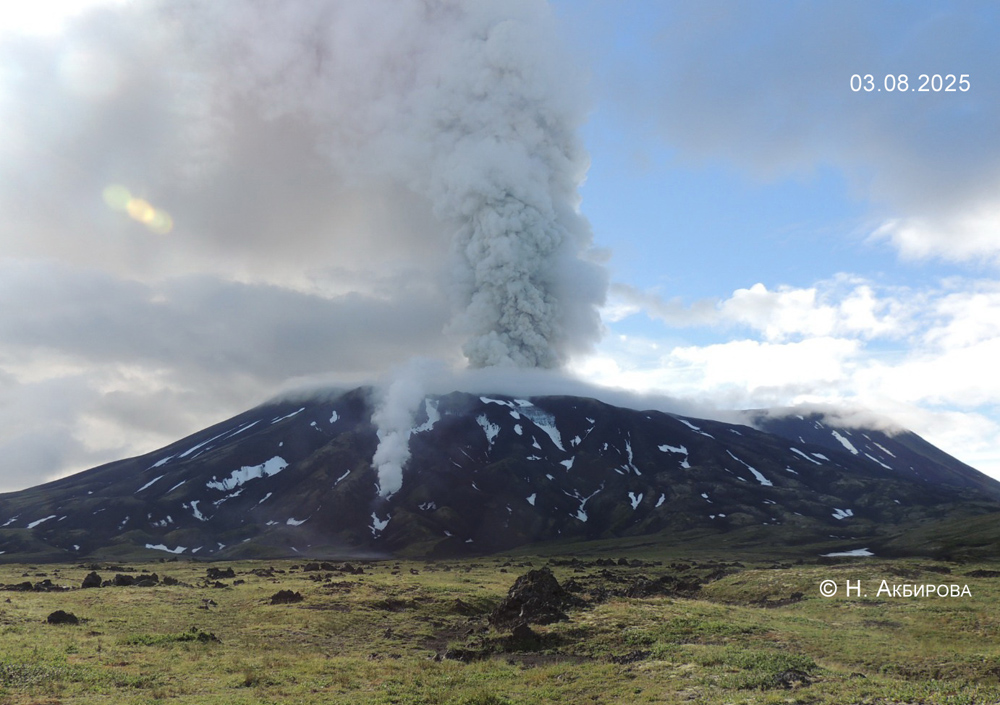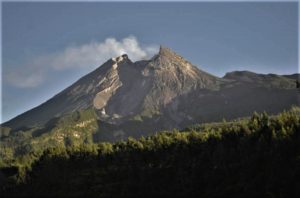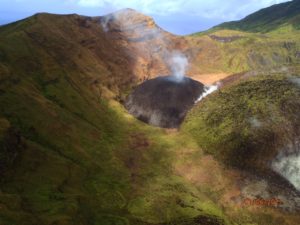November 14 , 2025.
Italy , Stromboli :
November 13, 2025 9:56 PM (8:56 PM UTC), STROMBOLI ACTIVITY UPDATE
The National Institute of Geophysics and Volcanology, Etna Observatory, announces that analysis of surveillance camera images has revealed, since approximately 7:30 PM UTC, a lava flow originating from the North Crater, feeding a lava flow in the upper part of the Sciara del Fuoco. This flow is accompanied by moderate but continuous ejection activity from at least two vents in the North Crater. Explosive activity continues in the South Crater.
From a seismic perspective, the average amplitude of volcanic tremors is at moderate levels. No significant changes have been reported in the frequency and amplitude of explosion earthquakes.
No significant changes have been detected in ground deformation signals.
Further updates will be provided soon.
Source : INGV.
Photo : Stromboli stati d’animo / Sebastiano Cannavo
New Zealand , White Island :
Minor eruptive activity continues at Whakaari/White Island, with higher plume visible from the Bay of Plenty coast. Volcanic Alert Level remains at 3 and Aviation Colour Code remains Orange.
Published: Fri Nov 14 2025 1:30 PM
Minor eruptive activity continues at Whakaari/White Island today. At about 11:30 NZDT this morning, a steam and gas plume rose to about 3 km above sea level and was visible from the Bay of Plenty coast. Webcam and satellite observations show that the volcanic ash content was minor, and the likelihood of volcanic ash reaching the mainland is very low. There is no risk of tsunami to the coast from such events. The Volcanic Alert Level remains at 3 and the Aviation Colour Code remains Orange.
At 11:30 NZDT this morning, our webcams from Whakatāne and Te Kaha observed a steam and gas plume rising from Whakaari/White Island up to an altitude of about 3 km above sea level. From analysis of our webcam images, and satellite imagery courtesy of our colleagues at MetService, it is considered that the likelihood of significant volcanic ash in the plume is minor. After about 30 minutes, the plume returned to a more typical altitude of about 1 km or less.
The steam and gas plume seen at Whakaari/White Island seen from our Whakatāne webcam at 11:40 NZDT this morning. We have modified the contrast of this image to make the plume more visible.
Whilst the plume was highly visible from afar, this does not reflect a significant change of activity at the volcano. The height that a volcanic plume can reach is determined by a combination of the volcanic activity and atmospheric conditions. Today Metservice has issued a severe Thunderstorm Watch in the Bay of Plenty and volcanic plumes can more easily rise through the atmosphere under these conditions. Given the current atmospheric conditions, and the volcanic activity level over recent weeks, it is possible further visibly impressive plumes may be observed.
As wind directions change, the plume may at times be blown towards the Bay of Plenty coast, meaning residents may possibly smell sulphur odours. However, at the current level of activity, there is a very low likelihood of ash falling to the ground (ashfall) at the coast. The level of volcanic activity would have to escalate significantly for this likelihood to increase.
Based on the recent observations, the Volcanic Alert Level remains at level 3 (minor volcanic eruption) and the Aviation Colour Code remains Orange. These levels acknowledge the predominant low level of activity but also reflect the degree of uncertainty about volcanic activity due to the current lack of real-time monitoring data from the island.
Source : Geonet / Paul Jarvis / Duty Volcanologist
Photos : Geonet
Indonesia , Merapi :
Hot Cloud Avalanche Observed on Mount Merapi, November 12, 2025
The Geological Disaster Management Technology Research and Development Center (BPPTKG) reported a pyroclastic avalanche on Mount Merapi on Wednesday, November 12, 2025, at 7:33 PM (local time).
The event traveled approximately 1,500 meters southwest, specifically to the source of the Krasak River. Seismographic data recorded a maximum amplitude of 21 mm and a duration of 101.3 seconds. The wind was blowing from the east at the time of the event.
The avalanche was accompanied by images of thick gray smoke and incandescent lava, clearly visible on surveillance cameras. This indicates that Merapi’s volcanic activity remains high and presents a risk of further avalanches, including pyroclastic flows.
The BPPTKG confirms that Mount Merapi’s activity level is currently at Level III (SIAGA). The public is urged to remain calm and follow all official recommendations, especially those living near the Krasak, Boyong, Bedog, Bebeng, and Sat rivers.
Source : BPPTKG.
Photo : AFAR TV via Wulan Merapi / FB.
Iceland , Askja :
Ground deformation at Askja has now reached close to a metre of uplift, more than five years after the volcano began showing renewed movement.
Despite the scale of this change, geologists say the long-running activity may continue quietly for some time; or, less likely, could eventually culminate in an eruption.
As reported by RÚV, the most recent development was a magnitude 3.5 earthquake, recorded earlier this week. While tremors are not unusual at Askja, events of that size stand out.
“Nothing very common, but they are not unique,” said Benedikt G. Ófeigsson, who oversees deformation measurements at the Icelandic Meteorological Office.
He emphasised that single earthquakes offer few clues: “There are many possible reasons for them. It’s difficult to directly link this to the recent land rise and magma accumulation, but of course it’s not out of the question.”
Víti crater lake on Askja
Askja had shown virtually no measurable change for decades until subtle signs of uplift appeared around 2021. The rise accelerated during 2022, slowed somewhat in mid-2023, and has continued at a steady, lower rate ever since.
Current data suggests magma is pooling three to five kilometres beneath the surface, forcing the caldera floor upward.
Even so, Benedikt notes no shifts in the geothermal system that would point to magma nearing the upper crust. “As things stand now, we see no signs that anything is imminent.”
A dense monitoring network tracks Askja year-round, though winter weather can disrupt some instruments. With few historical measurements before the 1961 eruption, scientists still lack a clear threshold for how much uplift Askja can undergo before the crust fails.
“We don’t know… it could be a lot longer before anything happens,” Benedikt said.
Source : Iceland rewiew . com
Photo : Ulrich Latzenhofer. Wikimédia Commons
Kamchatka , Krasheninnikov :
VOLCANO OBSERVATORY NOTICE FOR AVIATION (VONA)
Issued: November 14 ,2025
Volcano: Krasheninnikov (CAVW #300190)
Current aviation colour code: ORANGE
Previous aviation colour code: orange
Source: KVERT
Notice Number: 2025-136
Volcano Location: N 54 deg 35 min E 160 deg 16 min
Area: Kamchatka, Russia
Summit Elevation: 1856 m (6087.68 ft)
Volcanic Activity Summary:
Satellite data by KVERT show a series of moderate short-lived explosions from 21:00 UTC on 13 November: explosions sent ash up to 3.5 km a.s.l., and ash plumes extended for 10 km to the north and northeast of the volcano.
The explosive-effusive eruption of the volcano continues. The danger of ash explosions up to 6 km (19,700 ft) a.s.l. remains. Ongoing activity could affect low-flying aircraft.
Volcanic cloud height:
3200-3500 m (10496-11480 ft) AMSL Time and method of ash plume/cloud height determination: 20251113/2350Z – Himawari-9 14m15
Other volcanic cloud information:
Distance of ash plume/cloud of the volcano: 10 km (6 mi)
Direction of drift of ash plume/cloud of the volcano: NE / azimuth 46 deg
Remarks:
The first historical eruption of the volcano began on 02 August, 2025. The explosive-effusive eruption of the volcano continues. The previous effusive eruption of the volcano occurred 400-600 years ago.
Source : Kvert .
Photo : N. Akbirova , 3/8/2025.


